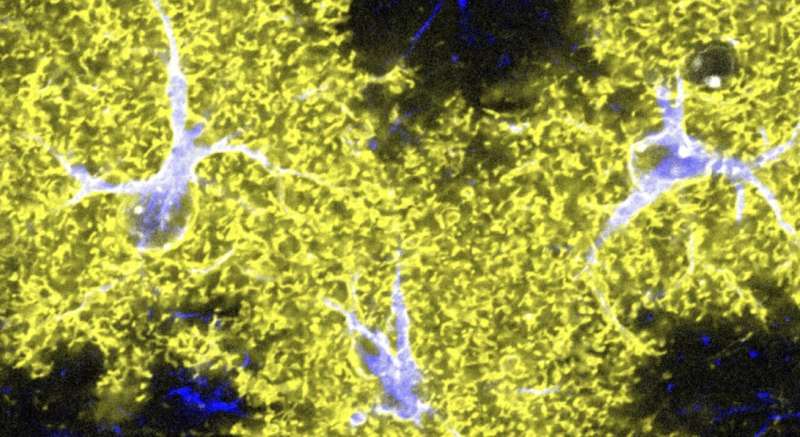August 24, 2023 feature
This article has been reviewed according to Science X's editorial process and policies. Editors have highlighted the following attributes while ensuring the content's credibility:
fact-checked
peer-reviewed publication
trusted source
proofread
Study shows that astrocytes in the cortex modulate the dominant behavior of male mice

The social behavior of animals has been the key focus of extensive neuroscience and biomedical studies, as it is often aligned with behaviors observed in humans. Better understanding these behaviors and the neural processes underpinning them could ultimately also have implications for the treatment of different psychiatric disorders that affect how humans socialize with others.
Researchers at Seoul National University and other institutes in South Korea recently conducted a study specifically exploring male dominance behavior among male mice. These behaviors naturally lead to the formation of social hierarchies among groups of mice, with some males accessing more food and water than others.
The recent paper, published in Nature Neuroscience, highlights the role of astrocytes in the outer layer of the brain (i.e., the cortex), in modulating the dominance behavior of male mice. In addition, it sheds some light on the specific neural processes through which astrocytes modulate these behaviors.
"While astrocytes modulate the neuronal excitatory/inhibitory (E/I) balance that could directly affect social behaviors, efforts to understand the biological basis of mouse dominance behavior have largely focused on the neuronal mechanism," Sung Joong Lee, a principal researcher who carried out the study, told Medical Xpress. "This led us to investigate the role of prefrontal astrocytes in mouse dominance behavior."
To explore the role of cortical astrocytes in male dominance behavior, Lee and his colleagues carried out experiments on live and adult male mice. In these experiments, they used optogenetic and chemo-genetic techniques to activate or inhibit astrocytes in the dorsomedial prefrontal cortex (dmPFC), a brain region known to play a role in social behavior and decision-making.

The researchers recorded the activity of neurons and astrocytes in the behaving mice brain during social dominance behavior using two different methods known as fiber photometry and two-photon microscopy. They also observed the social behavior of the mice, to determine whether activating or inhibiting astrocytes in the dmPFC increased or reduced dominance behaviors among males.
"We monitored astrocyte calcium activities with fiber photometry and two-photon imaging experiments, and optogenetic and chemogenetic techniques were used to manipulate astrocytic calcium signaling," Lee explained. "We also collected electrophysiological recordings of neuronal activities by modulation of astrocytic calcium activities."
The results gathered by Lee and his colleagues hint at the involvement of communication between dmPFC astrocytes and neurons in the dominant behavior of male mice. In the future, this work could pave the way for new discoveries about the neural underpinnings of male dominance and the formation of social hierarchies as a result of dominance behaviors.
"Overall, our work provides a comprehensive understanding of the neuron-astrocyte communication that regulate mouse social behavior," Lee added. "It implies that astrocytes also play critical role in computing and processing high-order brain functions. It also suggests that such intercellular interplay may decipher the etiology of many psychiatric disorders."
In their next works, Lee and his colleagues plan to investigate the function of specific astrocytes in different subregions of the brain. Their goal is to clearly map the involvement of astrocytes in these different brain regions in various high-order brain functions.
More information: Kyungchul Noh et al, Cortical astrocytes modulate dominance behavior in male mice by regulating synaptic excitatory and inhibitory balance, Nature Neuroscience (2023). DOI: 10.1038/s41593-023-01406-4
Nguyen T. Phi et al, Control of social hierarchy beyond neurons, Nature Neuroscience (2023). DOI: 10.1038/s41593-023-01392-7
© 2023 Science X Network




















